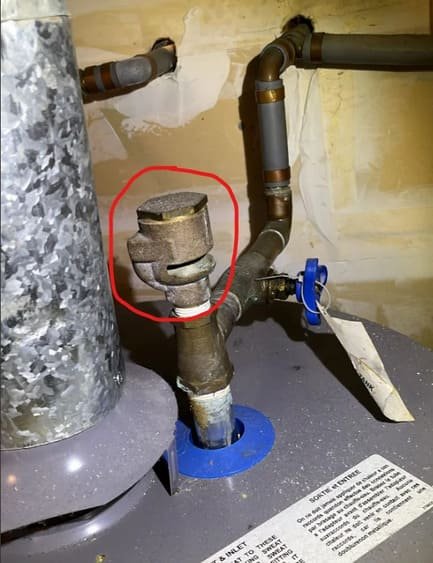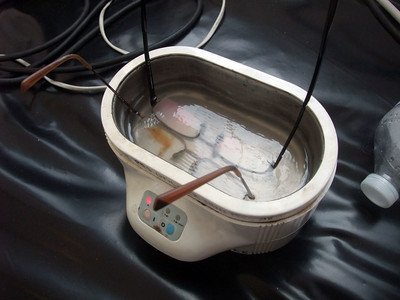Have you ever stopped to think about the silent protectors of your home’s plumbing system? Most people don’t. Yet, there’s an unsung hero among these components that works diligently to keep your water clean and your system safe: the vacuum breaker.
If you’re scratching your head wondering what that is or whether you need one for your water heater, don’t worry. Let’s unravel this mystery together, step by step.
What Exactly is a Vacuum Breaker, Anyway?

Picture this: your plumbing system is a one-way street, with water flowing in the right direction—towards your faucets, showers, and appliances. But sometimes, due to unexpected changes in pressure, water decides to pull a U-turn. This reversal, called back-siphonage, can drag along contaminants like dirt, chemicals, or bacteria, threatening your clean water supply. That’s where the vacuum breaker comes in. Think of it as a vigilant crossing guard, ensuring water never travels where it shouldn’t.
Here’s how it works: when a vacuum forms—perhaps because of a burst pipe or heavy water demand elsewhere—the vacuum breaker steps in. It introduces air into the system, breaking the siphon and ensuring that no dirty water sneaks into your pipes. Simple yet genius, right?
Why Might a Water Heater Need it?
Now, you might be wondering, “Okay, but what does this have to do with my water heater?” Great question. Let’s dive deeper:
Prevention of Back-Siphonage
In some water heater systems, particularly those connected to appliances or fixtures where water stagnates, there’s a risk of back-siphonage. A vacuum breaker prevents contaminants from entering the water heater and, subsequently, the entire water supply.
Following the Rules
Many municipalities have strict plumbing codes that require vacuum breakers for specific setups. If your water heater is in one of these categories, skipping this device could mean fines or even a plumbing redo. Nobody wants that.
Prolonging the Life of Your Water Heater
Backflow can create pressure imbalances and stress on your water heater’s tank. Over time, this can lead to wear and tear, shortening the lifespan of your system. Think of the vacuum breaker as a bodyguard, shielding your investment from unnecessary harm.
Types of Vacuum Breakers for Water Heaters
Did you know vacuum breakers aren’t one-size-fits-all? Here’s a quick tour of the most common types, so you can find the perfect match for your system:
- Atmospheric Vacuum Breakers (AVBs):
These are like the entry-level models. Affordable and effective, they work by relying on gravity to allow air into the system. But there’s a catch: they can’t handle constant water pressure. If your water heater runs continuously, you’ll need a sturdier option.
- Pressure Vacuum Breakers (PVBs):
Built for the long haul, PVBs can handle continuous pressure and are a popular choice for water heaters. They’re more robust and versatile than their atmospheric counterparts.
- Hose Bib Vacuum Breakers:
Compact and handy, these are often used for outdoor spigots. However, they can also be a good choice for smaller-scale water heater setups that don’t demand heavy-duty solutions.
Do All Water Heaters Require a Vacuum Breaker?
Let’s not beat around the bush: not every water heater requires a vacuum breaker. But there are situations where it’s non-negotiable:
Tankless Water Heaters:
Most tankless systems include built-in backflow prevention. Still, in complex installations or areas with stringent codes, an additional vacuum breaker might be a smart move.
Solar Water Heaters:
These systems, especially those with storage tanks, are prime candidates for vacuum breakers. The risk of backflow is higher due to the unique mechanics of solar setups.
Commercial Settings:
If your water heater serves multiple fixtures or operates in high-demand environments, regulations often mandate vacuum breakers. Safety first, always.
Installing a Vacuum Breaker: DIY or Call a Pro?
Feeling adventurous? Installing a vacuum breaker isn’t rocket science, but it does require some plumbing know-how. Here’s a general roadmap:
- Shut Off the Water Supply: This is non-negotiable. Always start with a dry system.
- Find the Installation Point: Usually, this will be on the inlet or outlet pipe of your water heater.
- Install the Vacuum Breaker: Attach the device according to the manufacturer’s instructions, ensuring a tight seal.
- Test the System: Turn the water back on and watch for leaks or unusual behavior.
- Still Unsure? No shame in calling a licensed plumber. Sometimes, peace of mind is worth the extra cost.
Benefits of Installing a Vacuum Breaker
Adding a vacuum breaker might seem like a small detail, but its benefits are anything but minor:
- Cleaner Water: No more worrying about what might be lurking in your pipes.
- Code Compliance: Sleep easy knowing your system meets all regulations.
- System Longevity: A happy water heater means fewer repairs and replacements.
The Final Word
So, do you need a vacuum breaker for your water heater? It depends on your setup, your local codes, and your priorities. But here’s the bottom line: this little device packs a big punch when it comes to protecting your water supply and your plumbing system. If you’re on the fence, consult a professional. It’s a small step that could save you a world of hassle down the line.
Remember, in the world of plumbing, it’s often the simplest devices that make the biggest difference. The vacuum breaker is no exception. Stay proactive, stay informed, and your water heater will thank you for it.



